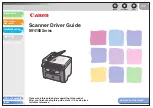
User Manual | Mitchell Diagnostics | Scan Tool | 3 | en
©Mitchell International, Inc.
581624 | REV. B | 06.2017 | APDMD032018
Use of an attachment not recommended or
sold by the battery charger manufacturer
may result in fire, electric shock, or personal
injury.
Do not operate the tool with a damaged
cord or connector. Replace damaged cords
and connectors immediately.
Do not operate the charger if it has received
a sharp blow, been dropped, or otherwise
damaged in any way. Take the charger to a
qualified service person.
Do not disassemble the charger. Take the
charger to a qualified service person if service
or repair is necessary. Incorrect reassembly
may result in electric shock or fire. Unplug
charger before attempting any maintenance
or cleaning. Turning off controls will not
reduce this risk.
To prevent possible hearing damage, avoid
using the tool at high volume levels for long
periods.
Do not expose tool or charger to rain,
moisture, or snow.
Verify that cords are located where they will
not be stepped on, tripped over, or otherwise
become a safety hazard or subjected to
damage or stress.
Use only batteries that are approved for
use with this tool. Use of other types may
increase the risk of fire or explosion.
Do not carry a battery in your pocket, purse,
or other container where metal objects (such
as car keys or paper clips) could short-circuit
the battery terminals. The resulting excessive
current flow can cause extremely high
temperatures and may result in damage to
the battery pack or cause fire or burns.
The battery poses a burn hazard if you
handle it improperly. Do not disassemble it.
Handle a damaged or leaking battery with
extreme care. If the battery is damaged,
electrolyte may leak from the cells and may
cause personal injury.
Keep the battery away from children.
Do not store or leave your tool or battery
near a heat source such as a radiator,
fireplace, stove, electric heater, or other heat-
generating appliance or otherwise expose it
to temperatures in excess of 140 ºF (60ºC).
When heated to excessive temperatures,
battery cells could explode or vent, posing a
risk of fire.
Do not dispose of your tool’s battery in a fire
or with normal household waste. Battery
cells may explode. Discard a used battery
according to the manufacturer’s instructions
or contact your local waste disposal agency
for disposal instructions. Dispose of a spent
or damaged battery promptly.
IMPORTANT:
To avoid damage or generation
of false data, make sure the vehicle battery
is fully charged and the connection to the
vehicle Data Link Connector (DLC) is clean
and secure.
Do not place the tool on the distributor of a
vehicle. Strong electromagnetic interference
can damage the tool.
Never disconnect or reconnect any
electrical connector while the ignition is on.
Powertrain Control Module (PCM) damage
may result.





































